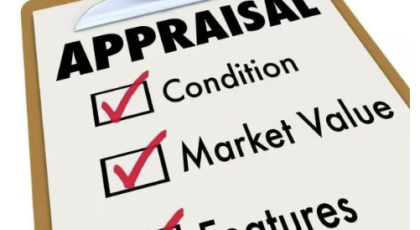In the ever-evolving landscape of the mortgage industry, non-Qualified Mortgage (non-QM) lending emerges as a vital solution, offering flexibility and accessibility to a diverse range of borrowers. This long-form article delves into the intricacies of non-QM lending guidelines, aiming to equip borrowers and lenders alike with the knowledge needed to navigate this complex terrain. With a keen focus on SEO optimization, we’ll explore the essentials of non-QM lending, its benefits, key players, and how it stands as a beacon of hope for those who fall outside the conventional lending criteria.
Introduction to Non-QM Lending
Non-QM lending refers to mortgage loans that do not meet the stringent criteria set forth by the Consumer Financial Protection Bureau (CFPB) for Qualified Mortgages (QMs). Designed to broaden the eligibility for home loans, non-QM loans are tailored for individuals with unique financial backgrounds, offering a more inclusive path to homeownership.
The Genesis of Non-QM Loans
Following the 2008 financial crisis, the Dodd-Frank Wall Street Reform and Consumer Protection Act introduced Qualified Mortgages as a measure to prevent risky lending practices. However, this left a gap for borrowers with non-traditional income sources or higher debt-to-income ratios. Enter non-QM loans, designed to fill this void while still adhering to responsible lending practices.
Understanding Non-QM Lending Guidelines
Non-QM lending guidelines are crafted to assess a borrower’s ability to repay the loan, albeit with more flexibility than QM requirements. These guidelines often consider alternative documentation for income verification, such as bank statements, asset depletion, or profit and loss statements for self-employed individuals.
The Spectrum of Non-QM Borrowers
Non-QM loans cater to a wide array of borrowers, including but not limited to:
- Self-employed professionals who might not have consistent W-2 income but can demonstrate financial stability through other means.
- Real estate investors looking for options like interest-only loans to maximize their investment strategies.
- High-net-worth individuals who require larger loan amounts that surpass conforming loan limits.
- Borrowers with recent credit events such as bankruptcies or foreclosures, yet have since recovered financially.
The Advantages of Non-QM Lending
The primary advantage of non-QM lending lies in its flexibility, offering loan products that are:
- Customizable to fit diverse financial situations.
- Innovative, with lenders frequently introducing new products to meet borrower needs.
- Accessible, providing options for those who may be sidelined by traditional lending criteria.
The Role of Lenders and Investors in Non-QM Lending
Lenders specializing in non-QM loans play a crucial role in the ecosystem, offering expertise and innovative products. Meanwhile, investors in non-QM loan securities are essential for providing the capital needed to fund these loans, attracted by potentially higher yields compared to traditional mortgage-backed securities.
Navigating the Non-QM Loan Application Process
The non-QM loan application process involves thorough financial scrutiny, with lenders looking at the overall financial health of the borrower. This may include a detailed analysis of income, assets, credit history, and the property being financed.
The Future of Non-QM Lending
As the demand for flexible lending solutions grows, the non-QM market is poised for expansion. Technological advancements and regulatory developments will likely shape the future landscape, making non-QM loans more accessible and efficient for borrowers and lenders alike.
Choosing the Right Non-QM Lender
Selecting the right lender is paramount. Borrowers should look for lenders with:
- Strong industry expertise and a robust portfolio of non-QM products.
- Transparent lending practices, ensuring borrowers fully understand the terms and conditions of their loans.
- A commitment to customer service, guiding borrowers through the lending process.
Conclusion
Non-QM lending stands as a pivotal component of the mortgage industry, offering a lifeline to borrowers with unique financial circumstances. By understanding the nuances of non-QM lending guidelines, borrowers can unlock the door to homeownership, while lenders can tap into a burgeoning market. As the landscape evolves, both parties must navigate the complexities of non-QM lending with diligence and foresight. Ultimately, the growth of non-QM lending will hinge on its ability to balance innovation with responsible lending, ensuring long-term stability and accessibility in the housing market.
In this comprehensive exploration, we’ve uncovered the foundational elements of non-QM lending, emphasizing its significance in today’s mortgage ecosystem. As we look to the future, the continued adaptation and growth of non-QM lending will undoubtedly play a critical role in shaping the path to homeownership for
many who otherwise might find themselves excluded from achieving this quintessential aspect of the American dream.
As the industry progresses, staying informed and engaging with reputable, knowledgeable lenders will be key for both potential borrowers and those invested in the broader landscape of real estate and finance.
In conclusion, non-QM lending is not just a financial product but a testament to the evolving nature of the mortgage industry, one that seeks to include rather than exclude. It challenges the traditional notions of borrowing and lending, offering a more nuanced approach that reflects the diverse economic realities of today’s society. For borrowers, understanding non-QM loans opens up new possibilities for homeownership and investment. For lenders, it represents an opportunity to serve a wider array of clients while fostering a healthier, more inclusive housing market.
As we move forward, the success of non-QM lending will largely depend on the industry’s ability to innovate responsibly, ensuring that the lessons of the past inform the practices of the future.
For those navigating the complexities of non-QM lending, the journey may seem daunting, but the potential rewards — financial stability, homeownership, and investment growth — are undeniably compelling. With the right guidance, information, and resources, the path through non-QM lending can lead to unprecedented opportunities for many who dare to venture beyond the traditional boundaries of mortgage lending.
Whether you’re a borrower exploring your options, a lender looking to expand your portfolio, or an investor interested in the potential of non-QM loans, the future is bright. The key to unlocking that potential lies in education, collaboration, and a commitment to financial integrity. As the mortgage industry continues to evolve, non-QM lending will undoubtedly play a pivotal role in shaping its trajectory, offering a bridge to financial inclusion and prosperity for a wide range of individuals and families across the nation.
Where can i find a non qualified mortgage in new york
Finding a non-qualified mortgage (non-QM) in New York involves understanding what a non-QM loan is and where to look for lenders offering this type of financing. Non-QM loans are designed for borrowers who don’t fit the traditional qualifying criteria set by government-sponsored enterprises like Fannie Mae and Freddie Mac. Here are steps and resources to help you find a non-QM loan in New York:
- Specialized Mortgage Lenders and Brokers:
- Look for lenders and mortgage brokers who specialize in non-QM loans. These entities often advertise their services online and can provide customized solutions for those with unique financial situations.
- Online Financial Marketplaces:
- Utilize online platforms and marketplaces that connect borrowers with various lenders, including those offering non-QM loans. These platforms allow you to compare rates and terms from multiple lenders at once.
- Community Banks and Credit Unions:
- Some local banks and credit unions in New York may offer non-QM loans or similar products tailored to the needs of their community members. It’s worth reaching out to these institutions directly to inquire about their loan offerings.
- Real Estate Investment Groups and Forums:
- Join real estate investment groups or online forums where members share resources and information about financing options, including non-QM loans. Networking with professionals in the real estate industry can lead to personal recommendations for lenders.
- Financial Advisors or Mortgage Consultants:
- Consider consulting with a financial advisor or mortgage consultant who has experience with non-traditional financing. They can provide personalized advice and direct you to reputable lenders in New York.
When searching for a non-QM loan in New York, it’s important to carefully review the terms and conditions offered by different lenders. Pay close attention to interest rates, fees, repayment terms, and any penalties associated with the loan. Due to the higher risk associated with non-QM loans, lenders may charge higher interest rates compared to traditional mortgages.
Lastly, ensure that you understand the full implications of taking out a non-QM loan, including how it fits into your overall financial strategy. While these loans can provide flexibility for certain borrowers, they also come with specific considerations and risks.
















